"For service and courage" "He was given for courage and loyalty to his native land."
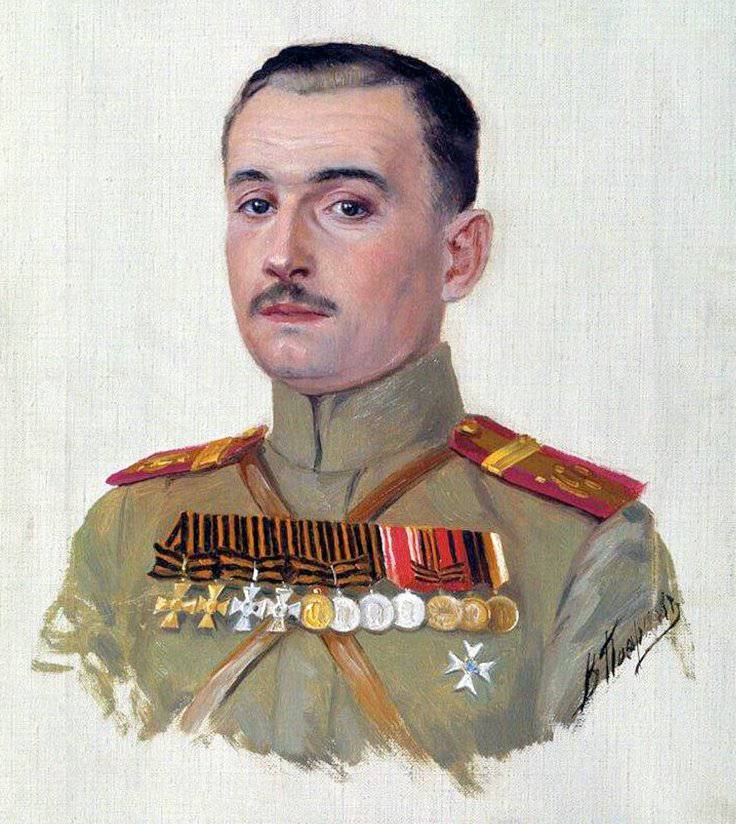
As mentioned in the first part of the article, the Order of St. George took an exceptional position in the Russian award system and kept it to the end of its existence. Historian E.P. Karnovich wrote that in pre-revolutionary Russia, “the appearance of the St. George Cavalier in society very often draws the attention of those present to him, which is not the case with those who are holders of other orders, even star-bearers,” that is, awarded with orders of higher degrees.
The highest authority of the Military Order in the army and the people led to the wide use of its symbols.
A kind of continuation of the Order of St. George are five battle gold officer crosses, worn on St. George ribbons, established between the 1789 and 1810 years. They complained to the officers presented for awarding orders of St.. George or St. Vladimir, but they did not receive:
• "For service and courage - Ochakov was taken in December 1788."
• "For excellent courage - Ishmael was taken on December 11, 1790."
• "For labors and courage - Prague is taken October 24, 1794".
• “Victory at Preussisch-Eylau 27 Genv. 1807".
• "For excellent bravery during the capture of Bazardzhik on May 22, 1810."
On the ribbon of St. George wore a gold pectoral cross, which was awarded to military priests. A pectoral cross on the St. George ribbon was a high award for clergymen. She noted the clergy who committed feats in the immediate danger to their own lives. The cross was awarded only for the difference under the fire of the enemy, and therefore any cleric could receive it, regardless of previously received spiritual or secular awards. The cross on the St. George ribbon was impossible to win, and he was not included in the list of the next awards even in wartime. He complained to the Emperor, the Emperor, in coordination with the Holy Synod, and was issued from His Majesty's Cabinet. Since military priests, by virtue of their position, more often the diocesan endangered their lives, they were more and rewarded. There have been cases of awarding pectoral cross and diocesan priests. For example, in the Crimean War, several hieromonks of the Solovetsky Monastery were awarded pectoral crosses on the St. George ribbon.
During the period from 1787 to 1918, over three hundred military clergymen of the Russian Orthodox Church were awarded such an award.
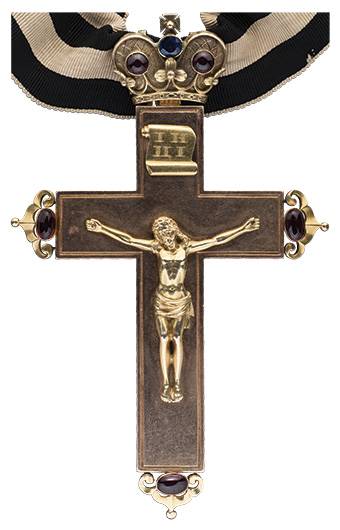
Insignia of the Military Order
On the chest of the lower ranks St. George ribbon appeared much earlier than the establishment of the famous Insignia of the Military Order. October 18 1787, the lower ranks of the detachment of Count Suvorov, especially distinguished in the reflection of the Turks from the Kinburn Spit, were awarded silver medals with the inscription "Kinburn, 1 October 1787", worn on the St. George ribbon. Then, on the St. George ribbon, the following medals were presented to the lower ranks:
• "For courage on the waters of Ochakovsky, June 1, 1788",
• "For the courage shown during the capture of Ochakov, December 6, 1788",
• "For courage on the Finnish waters, August 13, 1789",
• "For bravery during the attack of the Swedish batteries in 1790 at Geckfors",
• "For excellent courage during the capture of Ishmael, December 11, 1790",
• "For labor and courage during the capture of Prague, October 24, 1794."
All these medals were given only to distinguished lower ranks, and not to all who participated in the battles. Thus, the yellow-black ribbon began to penetrate into the Russian village, and in the old soldier who wore it, the villagers got used to seeing the hero.
Emperor Alexander I continued the tradition of awarding lower ranks with awards on the St. George ribbon, taking the throne, he said: “Everything will be as if I was my grandmother”: in 1804, the lower ranks who took part in the seizure of Ganja were given silver medals on the St. George ribbon with the inscription: "For work and courage in taking Ganzha Genvary 1804 of the year." But this medal was given not only to those who had distinguished themselves, but also to all those who were on the storming of the fortress.
In January, 1807, a note was presented to Alexander 1, which argued that it was necessary to establish a special award for soldiers and lower officers. At the same time, the author of the note referred to the experience of the Seven Years War and the military campaigns of Catherine II, when soldiers were given medals where the battle was recorded, in which they participated, which, of course, increased the soldiers' fighting spirit. The author of the note proposed to make this measure more effective by handing out insignia "with some degree of clarity," that is, taking into account real personal merit.
As a result, the 13 of February 1807 of the Year issued the Highest Manifesto, which established the Insignia of the Military Order, which would later be called the St. George's Cross: to the fatherland, loyalty to the Sovereign, jealousy to the service and fearless courage. "
It should be particularly noted that the Imperial Military Order of the Holy Great Martyr and Victor the Conqueror and the Insignia of the Military Order are different awards with different status.
The Manifesto specified the appearance of the award - a silver badge on the St. George ribbon, with the image of St. George the Victorious in the center.
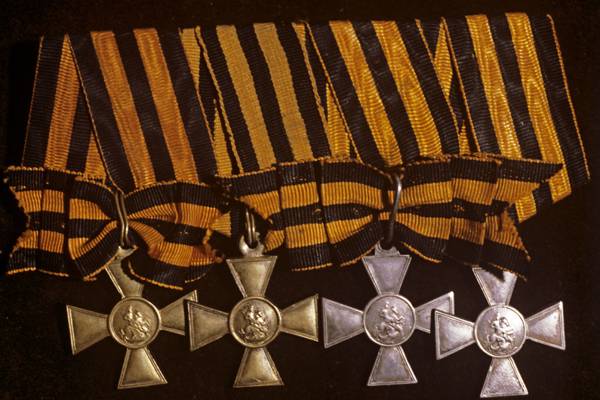
The cross was worn on the St. George black-ribbon on the chest. The rules concerning the insignia indicated: “It is acquired only in the battlefield, in the defense of fortresses and in sea battles. They are awarded only those of the lower military ranks, who, serving in the land and sea Russian troops, will really show their excellent bravery in the fight against the enemy. "
It was possible to deserve a badge of distinction only by accomplishing a combat feat, for example, by capturing an enemy banner or standard, capturing an enemy officer, first breaking into an enemy fortress during an assault or boarding a warship. The one who saved the life of his commander in battle could also receive this award.
Were specified in the manifesto, and other nuances of the new award. The lower ranks awarded them received many advantages. They were turned off from the tax-paying class, could not be subject to corporal punishment, they were added to pay, upon retirement pension was granted. Such a democratic measure was taken as the right of the lower ranks in some cases to choose worthy ones to receive a silver cross. In the early years of this award, a certain number of crosses were assigned to a company, ship, or other military unit after the fighting, and the soldiers or sailors themselves decided who was more worthy of the award. Subsequent feats of the Knight of the Difference Badge were awarded an increase in the content of the third part of the salary, up to its doubling.
The awards were handed out to the new gentlemen by the commanders in a solemn atmosphere, in front of the front of the military unit, on navy - on the daggers under the flag.
The insignia of the Military Order was established by Emperor Alexander Pavlovich exactly seventeen days after Preuchish-Eylau, a battle in which Russian troops set an example of courage and fortitude. However, the Emblem of Award was awarded to those who distinguished themselves in battles that occurred even before its establishment. Thus, in the battle of Morungen 6 in January 1807, the ensign of the 5 th huntsman regiment Vasily Berezkin captured the banner of the 9 th light regiment. The banner was handed to him in 1802 by Napoleon himself for distinguishing himself in the battle of Marengo. For this feat, Berezkin received the Insignia of the Military Order and was promoted to officer.
However, the first on the list of those who received the Insignia of Military Order was the non-commissioned officer of the Cavalry Regiment, Yegor Ivanovich Mitrokhin (or, according to other data, Mityukhin), who was awarded for distinction in battle with the French under Friedland 2 in June 1807
The reason for this was the fact that the initially awarded with the Signs of Difference were not recorded in any way, there was not a single list or numbering of their signs. When the number of recipients became very significant, the Military Collegium decided to finally put them on one list, however, it was not compiled in chronological order, i.e. on the time of awarding, and on the seniority of the regiments.
As a result, it turned out that Egor Ivanovich Mitrokhin was the first on the list. The following six names of the recipients were also from the Cavalry Regiment. Then the list included 172 lower ranks of the Life Guards of the Horse Regiment, followed by 236 of the Life Guards Hussars, etc. The list was numbered and served as the beginning of the Eternal list of the gentlemen of the Insignia of the Military Order. According to official data, awards without a number until October 1808 received 9000 lower ranks. After that, the Mint began to issue signs with numbers.
From the very moment of its establishment, the Order received several more unofficial names: the Cross of St. George of the 5 degree, the soldier George (“Egorii”) and others. Soldier Georgy number 6723 was awarded the famous "cavalry-girl", the heroine of the war with Napoleon Nadezhda Durova, who began service as a simple lance.
In the 1833 year, in the reign of Emperor Nicholas I, a new statute of the Order of St. George was adopted. It included a number of innovations, some of which concerned the awarding of crosses to the lower ranks. Of these, the most important are worth noting.
So, for example, all the powers in the award award now become the prerogative of the Commander-in-Chief of the armies and commanders of individual corps. This played a positive role, since it greatly facilitated the process of awards, thus freeing itself from many bureaucratic delays. Another innovation was that all soldiers and non-commissioned officers, who received the maximum increase in their salaries after the third award ceremony, received the right to wear a cross with a ribbon from the St. George ribbon, which in a certain sense was a precursor of the future division into degrees.
In 1844, changes were made to the appearance of crosses handed to Muslims, and subsequently to all non-Christians. It was ordered to replace the image of St. George on the medallion with the emblem of Russia, the two-headed imperial eagle. This was done in order to give the reward a more “neutral”, in the confessional sense, character.
114 421 people are marked with signs without a degree, of which 1176 received signs returned to the Chapter of Orders after the death of their previous gentlemen.
In 1839, for the soldiers - veterans of the Prussian army who participated in battles with Napoleon's troops in 1813 — 1815, 4500 marks were minted. On them, in contrast to the usual St. George awards on the reverse side, the monogram of Alexander I is depicted on the upper beam of the cross. Such signs, which had a special numbering, were handed 4264, the rest 236 went to the smelter.
The next major change in the statute of the order relating to the St. George awards for the lower ranks occurred in March 1856, he was divided into 4 degrees. 1 and 2 Art. were made of gold, and 3 and 4 of silver.

Rewarding degrees should be carried out sequentially, with each degree being introduced its own numbering. For 1 and 3 degrees, a bow from the St. George ribbon was attached to visual difference.
After numerous awards for the Turkish 1877 War - 1878, the stamps used at the Mint for minting the crosses were updated, with the medalist A.A. Griliches made some changes, and the awards have already finally acquired the look that remained until the 1917 year. The image of the figure of St. George in the medallion has become more expressive, dynamic.
In 1913, the new Statute of St. George Awards was adopted. From that moment on, the Insignia of the Military Order for awarding the lower ranks began to be officially called the St. George Cross. For each degree of this award a new numbering was introduced. A special award for the Gentiles was also abolished, they began to be given a sign of the usual type.
The new statute also introduced lifelong cash incentives to the Knights of the Cross of St. George: for 4 degree - 36 rubles, for 3 degree - 60 rubles, for 2 degree - 96 rubles and for 1 degree - 120 rubles per year. Cavaliers of several degrees of increase or pension was paid only for the highest degree. Retirement in 120 rubles could live normally, the salary of industrial workers in 1913 was about 200 rubles per year. The 1 degree cavalier also complained about the rank of sub-ensign, and the degree 2 cavalier received such a title only when he was discharged to the reserve.
During the years of the civil war, the actual absence of a unified command and the territorial disunity of the White armies led to the fact that a common award system was not created. There was not developed a unified approach to the issue of the permissibility of awarding pre-revolutionary awards. As for the soldiers' crosses of St. George and medals, they were awarded ordinary soldiers and Cossacks, volunteers, noncommissioned officers, junkers, volunteers and sisters of mercy in all the territories occupied by the White armies.
In the difficult years for Russia, the people, driven by a sense of patriotism, massively stood up to defend the Fatherland, which reflects the number of soldiers awarded St. George awards. The largest number of 1913 marks of degree issued prior to 1 was 1825, 2 was 4320, 3 was 23 605, 4 was 205 336.
In the 1914 year, with the beginning of World War II, the number of awards for St. George's crosses increased dramatically. By the year 1917 (already with the new numbering) 1-I degree was issued about 30 thousands of times, and 4-I - more than 1 million!
In connection with the large minting of St. George crosses made of precious metals, which took place in difficult economic conditions, in May 1915 was decided to reduce the sample of gold used for these purposes. Combat awards of higher degrees began to be made from an alloy with pure gold content in 60 percent. Since October, 1916 precious metals have been completely excluded in the manufacture of all Russian awards. The St. George Cross began to be minted from a tombac and nickel silver, with the designation on the beams: LM (yellow metal) and BM (white metal).
Naturally, it is not possible to list all the St. George Cavaliers. We confine ourselves to a few examples. There are several cases of awarding the Insignia of the Military Order and the St. George Crosses with whole units:
• 1829 - the crew of the legendary brig "Mercury", which took and won an unequal battle with two Turkish battleships;
• 1865 - Cossacks of the 4th hundred of the 2nd Ural Cossack regiment, who survived in an unequal battle with the many times superior forces of the Kokand under the village of Ikan;
• 1904 - the crews of the cruiser "Varyag" and the gunboat "Koreets", who died in an unequal battle with the Japanese squadron;
• 1916 - Cossacks of the 2nd hundred of the 1st Uman kosh ataman Golovatov regiment of the Kuban Cossack army, which, under the command of Yesaul V.D. Gamaliya made the most difficult raid in April 1916 during the Persian campaign.[16]
• 1917 - fighters of the Kornilov shock regiment for breaking through the Austrian positions near the village of Yamnitsa.
Among the most famous cavaliers of soldiery George are the famous character of the First World War, the Cossack Kozma Kryuchkov and the hero of the Civil War Vasily Chapaev - three crosses of St. George (4 st. No. 463479 - 1915 year; 3 st. No. 49128; 2 st. No. 68047 October 1916 of the Year) and the St. George Medal (4 degree No. 640150).
The full cavaliers of the soldier's St. George's Cross were Soviet military leaders: A.I. Yeremenko, I.V. Tyulenev, K.P. Trubnikov, S.M. Budyonny. Moreover, Budyonny received the St. George crosses even 5 times: the first award, the St. George Cross of the 4 degree, Semyon Mikhailovich was deprived of justice for assault on the senior officer, Vakhmistr. Again he received the cross of the 4 st. on the Turkish front, at the end of 1914 of the year. George Cross 3 st. was received in January 1916 for taking part in attacks under Mendelige. In March, 1916, Budyonny was awarded the cross of the 2 degree. In July, 1916, Budyonny received the St. George Cross of the 1 degree, for having brought four soldiers from the attack to the rear of the enemy 7 Turkish soldiers.
Of the future marshals, Rodion Malinovsky was awarded three orders of the lower rank (two times with 3 degree cross, one of which became known after his death), and non-commissioned officer Georgy Zhukov and junior noncommissioned officer Konstantin Rokossovsky had two crosses . The future general-major Sidor Kovpak had two crosses; during the years of the Great Patriotic War he was the commander of the Putivl partisan detachment and a combination of partisan detachments of the Sumy region, which later received the status of the First Ukrainian Partisan Division.
Among St. George's gentlemen there are women. The following cases of awarding women with a cross are known: this is Nadezhda Durova, the “cavalry-girl” mentioned earlier, who received the award in 1807, she is listed as Cornet Alexander Alexandrov in the lists of the cavaliers. For the battle of Denniewice in 1813, another woman received the Cross of St. George - Sophia Dorothea Frederick Kruger, non-commissioned officer from the Prussian brigade Borstella. Antonina Palshina, who fought in the First World War under the name of Anton Palshin, had crosses of St. George of three degrees. Maria Bochkareva, the first female officer in the Russian army, the commander of the "female death battalion" had two George.
new story Of St. George's Cross began on March 2 of 1992, when the insignia of the Cross of St. George was restored by decree of the Presidium of the Supreme Soviet of the Russian Federation.
St. George medal for courage.
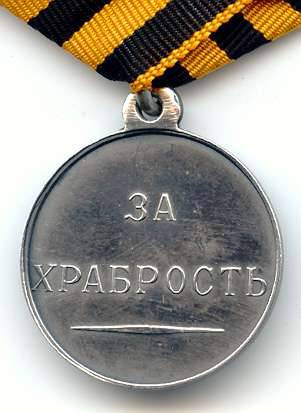
The word "courage" was repeated several times on award medals of the 18th and early 19th centuries. In the first half of the XIX century, award medals appeared, minted in gold and silver, with the inscription: "For courage." These medals were intended as a reward for military exploits to local residents of the Caucasus and Asian Russia, as well as to persons who do not have a military rank, but who have shown courage on the battlefield, for example, nurses. Could get this badge and women.
So, on the personal instructions of Admiral PS During the defense of Sevastopol, Nakhimov was awarded the sailor’s widow Daria Tkach with the silver medal “For Bravery” on the St. George Ribbon for her distinction in the defense of the Black Sea stronghold. A sailor's twelve-year-old son Maxim Rybalchenko deserved a medal and brought the enemy artillery to the Russian artillery positions under enemy fire.
From 1850 of the year to 1913, the year was included in the list of awards intended for the indigenous people of the Caucasus, Transcaucasia and other Asian territories of the Russian Empire, who are not regular troops and do not have officer and class ranks. She was awarded for differences in battles against the enemy on the side of the Russian army, for the feats shown in fights with violators of public order, with predatory animals, both in peacetime and in wartime, in connection with which natives of the Caucasus region prevailed among the awarded.
The medal was worn on the St. George ribbon. Had four degrees of dignity:
• a smaller silver medal (28 mm, 30 mm) to be worn on the chest;
• the same gold medal to be worn on the chest;
• a larger silver medal (50 mm) to wear around the neck;
• the same gold medal to be worn around the neck.
Graduality was observed in the awards: from the chest silver (lower dignity) to the golden neck. However, it was allowed to award medals of higher dignity besides the lower ones for the differences coming from a number of ordinary ones. The medals (both small chest and large neck) had no numbers; surplus wages and pensions were not supposed for them.
The medal “For Bravery” was deserved below the Military Order Insignia, but higher than all other medals, but for some time (in 1852 – 1858) the gold neck medal with the inscription “For Bravery” in the system of awards established for residents of Asian suburbs was above the insignia of the Military Order. Over the years of its existence, its status and appearance have been repeatedly changed.
The same awards continued to be issued for military merits to persons who do not have military ranks. The Golden Neck Medal was granted to the Crimean War by the mayor of Yeisk “for active orders under the fire of the enemy in saving state property and patients during the bombardment of the city by the Anglo-French squadron” in 1855 year.
In 1878, Emperor Alexander II, in order to award the lower ranks of the border guards and the army and navy units assisting her for military distinctions in the performance of the duties of the border and customs services, established a separate award - a medal with the inscription “For Bravery”. The medal had four degrees. The 1-i and 2-i degrees of this medal were gold, the 3-i and 4-i silver. The medals of all degrees had the same smaller size (28 mm), they were worn on the chest, on the St. George ribbon, and the 1-I and 3-I degrees - with a bow from the same ribbon. Gradual rewarding was observed: from 4 (lower) degree to 1 (highest).
On the obverse of the medal, the profile of the reigning emperor was depicted, on the back side - the inscription “For courage”, the degree of the medal and its number. This award was equated to the Badge of Honor of the Military Order and was above all other medals, including Anninsky. Under the new statute of 1913, the medals “For Bravery” of four degrees were officially named “Georgievskys” and could be awarded to any lower rank of army and navy for feats in wartime or peacetime. The medal could also be granted to civilians for military differences in wartime. With 1913, a new numbering of St. George medals began, separately for each step, as was the case with St. George's crosses.
Henrietta Sorokina, the sister of mercy, who saved the banner of the 6 Libyan regiment, became a full holder of the St. George medals. During the battle of Soldau, while working at the dressing station, Henrietta was easily injured in the leg. A badge of the Libavsky regiment, badly wounded in the stomach, tore the banner from the pole, rolled it up and said softly: “Sister, save the banner!” And with these words died on her hands. Soon the sister of mercy was again wounded, she was picked up by German orderlies and put in a hospital, where she was taken out a bullet from her foot. Henrietta lay there until she was recognized as subject to evacuation to Russia, retaining the banner.
The sovereign awarded his sister Sorokin with St. George medals of I and II degrees. But, given the value of the feat, the command presented Sorokin to awarding medals and other degrees. Medals of the 1 degree and 2 degree were with the sequence numbers “1”.
Award order weapon.
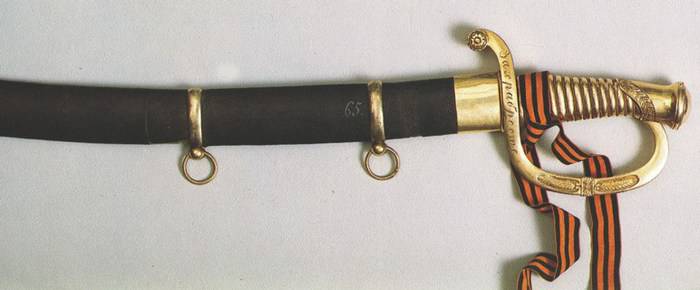
Distinguished in the battles of Russian soldiers expensive and beautiful weapons were awarded back in antiquity. And it happened so long ago that military scientists and specialists even find it difficult to answer when it happened for the first time. Among the first awards are usually called the sword of V. Shuisky, saber DM Pozharsky and saber BM Khitrovo. On the strip of the last sword, now stored in the Tsarskoye Selo Museum, the inscription is put in gold: “Tsar and Grand Prince of All Russia Mikhail Fedorovich bestowed this sable on Stolnik Bogdan Matveevich Khitrovo.”
In the Russian Empire, officers for military exploits were awarded only white (that is, cold) weapons. For the first time, officers of the regular units of the Russian army began to reward Peter I with cold arms, and subsequently only broadswords, swords, sabers (and half-swords), swords and dirks complained from the kings.
It was divided into two categories of insignia - award-winning edged weapons, which were given for military distinctions to officers of the regular army and navy, and award-winning weapons for soldiers of the irregular troops. The second group of award weapons existed without any special changes until the first quarter of the XIX century.
One of the first to receive a gold sword with diamonds was from the emperor, Admiral FM. Apraksin - for the liberation of the Vyborg fortress from the Swedes.
For the victory over the Swedish fleet near the island of Grengam, General Prince M.M. To Golitsyn, “a gold sword with a rich ornament of diamonds was sent as a sign of his military labor.”

Before 1788, only generals received prize swords, and the weapon was always decorated with precious stones. During the hostilities of the end of the 1780s, officers were also noted with this award, with the only difference being that they received swords without expensive decorations. Instead, the words “For Bravery” appeared on the hilt of the officer’s reward sword.
Back in 1774, Empress Catherine II introduced the “Golden Weapon” with the words “For Bravery” to distinguish them for their military exploits. The first to receive this honorary award was Field Marshal Prince A.A. Prozorovsky, in 1778, Catherine II granted GA the sword. Potemkin for fights in the Ochakov Estuary.
To award the officers at the same time made gold award swords, but without diamonds. On eight of them the inscription was stamped: “For courage rendered in the 7 battle of July 1778 of the year on the Ochakovsky estuary”, no date was indicated for twelve others. At the same time with the award weapon, another fourteen gold swords with the inscription “For courage” were made for the distinguished ones in the naval battle.
The last known case of awarding with golden weapons refers to the 1796 year, when the famous ataman M.I. Platov was awarded for the Persian campaign golden saber with diamonds "For courage". The campaign was interrupted in connection with the accession to the throne of Emperor Paul I and the change in Russian foreign policy.
Emperor Paul I canceled the award with a golden weapon with the inscription “For Bravery”, replacing it with “Anninsky weapon”. A red cross of the Order of St. Anne of the III degree was attached to the hilt of the award cold weapon. From 1797, the Order of the III degree, which was attached to the sword cup, received the shape of a mug with a red enamel ring on the edge and the same cross in the middle.
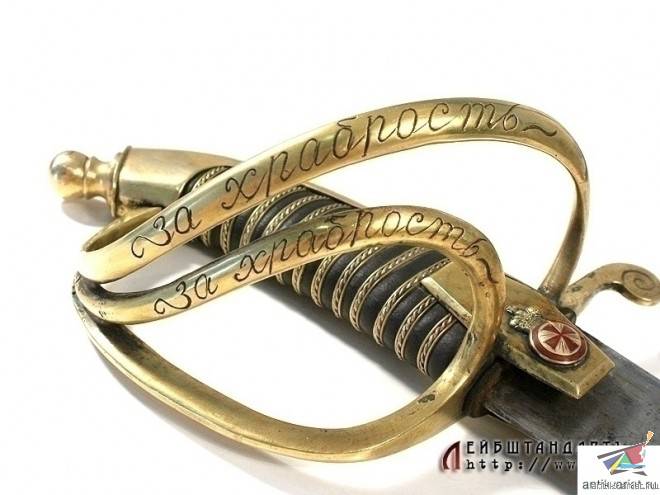
Awarding with golden weapons resumed from the reign of Alexander I, and from that time in Russia they began to award for military merits two types of cold weapons - gold and Anninsky. From 28 September 1807, officers awarded gold weapons with the inscription "For Bravery" began to be counted among the cavaliers of the Russian orders. Their names were recorded in the lists of gentlemen of the Russian orders of all names, which were annually published in the "Court calendars."
Awarded with Russian weapons and foreign allies. Field Marshal Prussia G.L. Blucher, English Duke A.W. Wellington, Austrian Prince KF Schwarzenberg received from the Emperor Alexander I gold swords with diamonds and inscriptions "For courage".
General MD Skobelev, one of the most talented Russian military leaders, was rewarded three times with weapons: in 1875 for taking Andijan with a sword with the inscription “For Bravery”, for the Kokand campaign - with a golden sword with the same inscription, at the end of 1870's - with a golden sword decorated with diamonds.
During the 19th century and up to 1913, formally, all golden weapons should have had hilt of gold, first the 72 test, and from April 3 the 1857 of the year - 56 test. But in the collection of the State Historical Museum there are copies of golden weapons issued in 1807, 1810, 1877 and later, whose hilt is only gilded. According to the provisions repeatedly confirmed, the golden weapon, both decorated with diamonds and without them, was issued to the awarded person free of charge. Only a golden weapon with a St. George cross, worn instead of a weapon with diamonds, was purchased by the recipients themselves.
In 1913, when the new statute of the Order of St.. Georgy, the golden weapon attached to this order received a new official name - the Georgievskiye weapon and the Georgievskoe weapon, decorated with diamonds. On the general’s arms, the inscription: “For courage” was replaced by an indication of the feat for which the award was presented. From now on, the ephesus of the Georgievsky weapon is not officially gold, but only gilded.
The St. George weapon could not be "pityable as a regular combat award or for participation in certain periods of campaigns or battles, without the presence of an undoubted feat."
During the First World War, thousands of soldiers and officers were awarded with St. George and Anninsky weapons. Among those awarded were commanders who later became the leaders of the White movement. This is the creator of the Volunteer Army M.V. Alekseev, chief of staff of the Stavka and commander-in-chief of the Western Front, AI Denikin, Supreme Ruler of Russia, Admiral A.V. Kolchak, Commander-in-Chief of the Caucasian Front N.N. Yudenich, Don Atamans (AM Kaledin, PN Krasnov, PA Bogaevsky), Ataman of the Orenburg Cossack Army A.I. Dutov and others.
The tradition of awarding cold arms to army and navy officers was used at the end of the Civil War and in the Red Army. The decree on the establishment of the “Honorary Revolutionary Weapon” was issued by the All-Russian Central Executive Committee 8 on April 1920, but they were awarded in the 1919 year, the gold checkers, which previously belonged to Russian officers, were particularly distinguished. In such cases, the award weapons of the Order of Saint Anne of the 4th degree and the white crosses of the Order of Saint George were torn off the award weapons, and instead of them they were imposed the badge of the Order of the Red Banner. 21 people received such awards, among them - S.S. Kamenev, M.N. Tukhachevsky, I.P. Uborevich, M.V. Frunze, F.K. Mironov, G.I. Kotovsky and others.
In December, 1924, the Presidium of the CEC of the USSR adopted the provision “On rewarding the persons of the highest commanders of the Red Army and Navy with Honorary revolutionary weapons”. This document as an honorary, except for checkers and dirk, was also established a firearm - a revolver. On its handle were attached the Order of the Red Banner and a silver overlay with the inscription: "To the Honorable Soldier of the Red Army from the CEC of the USSR". The first to receive this award were SS Kamenev and S.M. Budyonny.
The tradition of awarding with cold and firearms has been preserved in modern Russia, and even a special resolution of the Government of the Russian Federation “On awarding weapons to citizens of the Russian Federation” has been adopted.
Banners
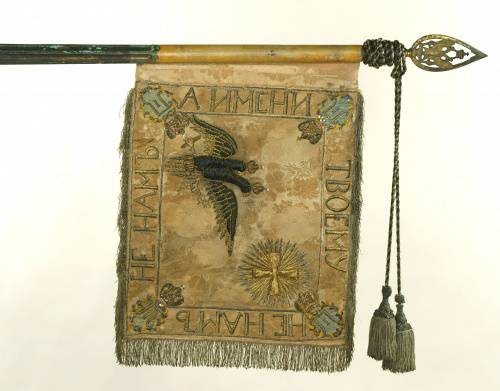
The wars of Russia with France gave a substantial impetus to the development of the Russian award system, especially with regard to collective awards. In 1799, during the Swiss campaign, AV Suvorov especially distinguished himself the Moscow Grenadier Regiment. 6 March 1800. He received a banner with the inscription “For taking the banner at the rivers of Trebbia and Nure. 1799. ”Also, for the Alpine campaign, the flags of the award were Archangelsk and Smolensk infantry regiments, and the Tauride Regiment - for participating in the expedition to Bergen in Holland. All for capturing enemy banners. These banners became the prototype of the banners of St. George.
The first actual "St. George" banners granted the highest order in November 15 1805, the shelves "for the difference in battle in November 4 when Shengrabene extended: Pavlograd hussar - standard, Chernigov dragoons - standard, Kiev Grenadier, Musketeer Azov, Podolsky, two battalions of the Novgorod and one Narva - banners, Don Cossack Sysoev and Khanzhenkov - one banner each, all depicting signs of the Military Order, and inscriptions of heroism, and 6 th jäger - silver pipes with the same inscription.
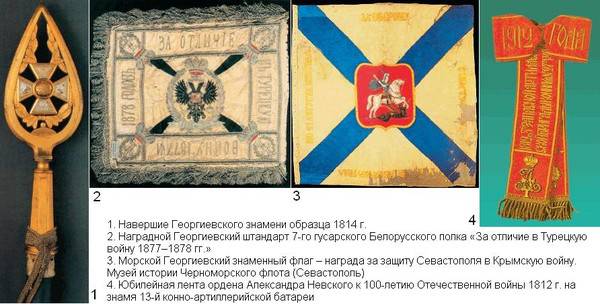
The highest order of November 15 1805 was granted shelves "for the difference in battle in November 4 when Shengrabene extended: Pavlograd hussar - standard, Chernigov dragoons - standard, Kiev Grenadier, Musketeer Azov, Podolsky, two battalions of the Novgorod and one of Narva - banners, Don Cossack Sysoev and Khanzhenkov - one banner each, all with the image of the signs of the Military Order, and inscriptions about the feat, and 6-th Jäger is silver pipes with the same inscription. ”
Figures of new banners and standards Adjutant General Count Liven submitted to the Sovereign for approval 13 July 1806 of the year. From these drawings, which were stored in the Moscow Dep. arch. The General Staff can see that in the center of the banner, in an orange circle, surrounded by laurel branches, was an image of St. George the Victorious riding a white horse, striking a dragon. Under this image is a writhing Andreev tape with an inscription on it about the feat. In all the cloth - St. George, white silk cross, the center of which is the above image. The corners of the banners are according to the colors of the regiments. Standards are oblong, green silk. In the upper left corner there is a large officer cross of St. George in a golden glow. In the lower right corner there is a golden double-headed eagle on Andrew's ribbon with the inscription on the last one about feat. At the corners of the monogram of Emperor Alexander I on green shields. Along the edges of the canvas, a little distance from them, a wide ribbon of the order of St.. George In the spear of each banner and standard, instead of an eagle, an officer's cross of St. George in a gilded laurel wreath. Brushes were hung on St. George ribbons.
The inscription on the banners, standards and silver pipes was composed by the Emperor himself: “For the exploits of Shengraben 4 November 1805 of the year, in the battle of 5 of the thousandth corps with the enemy, of 30 thousands consisted”. This project remained as if unknown to Viskovatov, who does not mention him in his capital work.
But not all the regiments were honored to receive these first Russian banners of St. George. In the battle of Austerlitz, the Azov regiment lost three banners, Podolsky 5, Narva 2. Novgorodsky, though he saved all of his banners, but according to Kutuzov’s testimony: “he didn’t hold out any less.”
13 July 1806 Gr. Liven wrote to the Emperor: “But as from this regiment, Azov, Podolsky and Narva, in the battle of 20 in November, the banners were lost, but Novgorod battalion was punished, then, on the basis of Your Majesty's will, not to give such regiments they are not now appointed. ”
Then there was a change in the number of assigned banners and in their drawings. September 20 1807 was granted to Pavlograd hussarsky - 10 St. Petersburg standards, Chernigovsky dragoonsky - 5, Kiev grenadier's - 6 St. George's banners, Don Cossacks one by one, and 6 th chasseursky - 2 silver. The drawings of all these differences are known by Viskovatov.
As for the regiments subjected to royal opal, they did not take into account the fact that officers and soldiers retained the Azov regiment's banner in 3 captivity (among them Starichkov's well-known banner), Podolsky's 4 banner, and all the regimental banners (white ). The Podolsk regiment was disbanded, while the Azov and Narva regiments had to regain their lost flags with military service. For the difference in the Swedish war, in 1, the Azov regiment received new but simple banners, while Narva, who distinguished himself in the assault on Bazardzhik, was awarded the same distinction in 1809. But the St. George banners these regiments had to wait many more years. Azov received them for Sevastopol, and Narva only for the Turkish war 1810-1877.
It goes without saying that the banners of St. George enjoyed great honor in the army and they were given hard, as the St. George Duma suggested, always by the personal decision of the Monarch at the end of the campaign. There were, of course, exceptions to this rule. Thus, in 1813, after the battle of Kulma, Emperor Alexander I personally announced the Life Guards Preobrazhensky and Semenovsky regiments about awarding them St. George banners and the Transfiguration immediately hung up St. George ribbons on their simple banners.
St. George's flag for the ships was a usual St. Andrew's flag, in the center of which the figure of St. George, spearing a serpent, was depicted in a red shield.
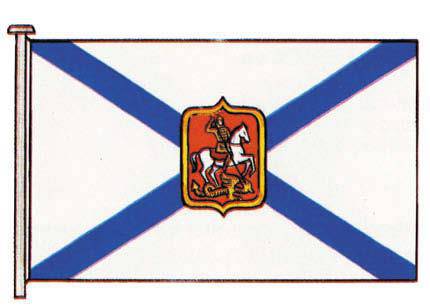
The honorary award for the naval crews were the banners of St. George. They had a St. George cross on the pole, banner brushes were worn on the St. George ribbon, and the inscription on the banner indicated for which battle they had been received. For the first time in the fleet, the banner of St. George received the Guards crew for taking part in the 1812-1814 war. On the banner was the inscription: "For rendered feats in the battle of 17 of August 1813 of the year under Kulm."
St. George pipes
Some types of troops (for example, artillery or sappers) did not have banners. But the necessary accessory of almost all military units were pipes, horns and drums, which gave signals in the campaigns. And then the custom arose to reward the parts distinguished in battles with silver pipes, which later became known as St. George silver pipes.
In 1762, Catherine II, having received the throne of the Russian Empire and wanting to win over the army, ordered to produce silver pipes for the regiments that distinguished themselves during the capture of Berlin. They made an inscription: “Haste and courage to take the city of Berlin. September 28 Day 1760 of the Year.
Gradually, a certain order was established in obtaining award pipes. In cavalry silver pipes were long and straight, and in the infantry - curly and bent several times. The infantry received two tubes for the regiment, and the cavalry had one in each squadron and one for the headquarters trumpeter.
St. George silver pipes appeared in 1805 year. Both those and others were wrapped around the St. George ribbon with tassels made of silver gimp, and on the bell of the St. George pipes another sign of the Order of St. George was strengthened. The first Georgievsk tubes were received by the 6 th Jäger regiment (in the future, the 104 th Infantry Ustyug).
Most of the pipes had inscriptions, sometimes quite lengthy. The last inscription of the foreign campaign of the Russian army on the tube of the 33 th regiment was the following: “The difference in the assault of Montmartre 18 March 1814 of the year”.
Some branches of troops (for example, the fleet) were assigned signal horns in the state. Instead of pipes, they received the St. George silver horns decorated with a white cross and ribbon as a reward for military exploits.
Georgievsky regiments
In winter, 1774 was made a kind of attempt to gather officers of the gentlemen of the Order of St.. George in one regiment. 14 December was followed by the following decree of the Empress:
“We all most graciously deign We now call the 3 th Cuirassier Regiment the regiment of the Military Order of the Holy Great Martyr George the Victorious and Victorious, commanding Our General and Vice-President of the Military College Potemkin to identify all of the headquarters and chief officers of this body of our member of this member of this member of this member of our member of this member of this member of our member of this member of this member of our member of this member of the Secretary of our member of this member of the Secretary of our Secretary. along other regiments, equally so that he, having made samples of the uniform and ammunition of that regiment, in accordance with the colors of the order, presented us for testing. ”
Supplementing the cuirassier military order of the regiment exclusively by the George Knights proved impossible in practice, but the regiment, to the end of its existence, retained its original name, “13 th Dragoon Military Order,” and uniforms corresponding to the order colors. It was the only regiment of the Russian army that wore a St. George star on a helmet and officer officer.
Another attempt was made in 1790, when the 16 in May of the Little Russian Grenadier Regiment was called the equestrian grenadier of the Military Order, but Paul 1 in November 29 1796 renamed this regiment into the Little Russian Cuirassier.
The Order of St. George and the Cross of St. George, thanks to its high prestige and wide popularity, influenced the emergence, appearance and status of a number of other awards that arose after the fall of the Russian Empire.
• Order of St. George of the Special Manchurian Detachment of Ataman G. M. Semyonov.
• Order of St. Nicholas the Wonderworker (1920) of the Russian Army, General P. N. Wrangel.
• The Order of the Cross of Liberty is the first state award of independent Finland, established during the Finnish Civil War in 1918 to reward supporters of National Finland in the fight against the Reds. The Order of the Lion of Finland - the appearance of the cross of the order, designed by the artist Oskar Piel and established on September 11, 1942, almost literally reproduces the Russian Order of St. George.
During the Great Patriotic War, continuing the military traditions of the Russian army, 8 November 1943 was established the Order of Glory of three degrees. Its statute, as well as the yellow-black color of the ribbon, reminded of the cross of St. George. Then the St. George ribbon, confirming the traditional colors of the Russian military prowess, decorated many soldiers and modern Russian medals and insignia.
On the screen saver: George Knight Dudnikov, sergeant-major lieutenant of the 7 of the Finnish Infantry Regiment.
Sources: Military Order of the Holy Great Martyr and George the Victorious. Name lists 1769 — 1920. Biobibliographic reference. Resp. V.M. Shabanov. M., “Russian World”, 2004.
Durov V. A. Order of the Russian Empire - M .: "White City", 2002,
Begunova A. Russian premium edged weapons in the XVIII — XX centuries. New Gun Magazine Magnum. - 2001. - No. 7.
"MILITARY BEAR" №48 1961 year

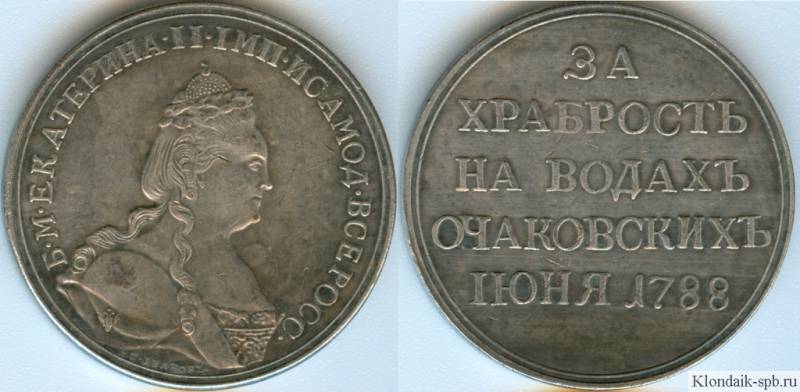
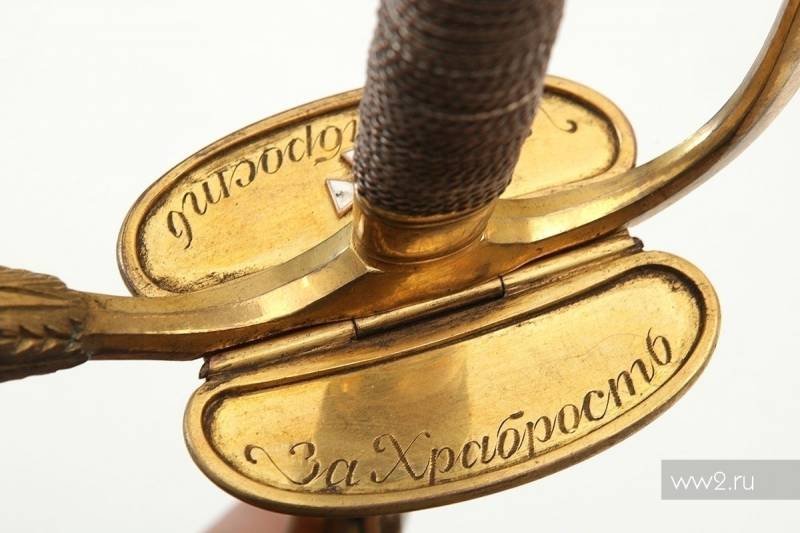
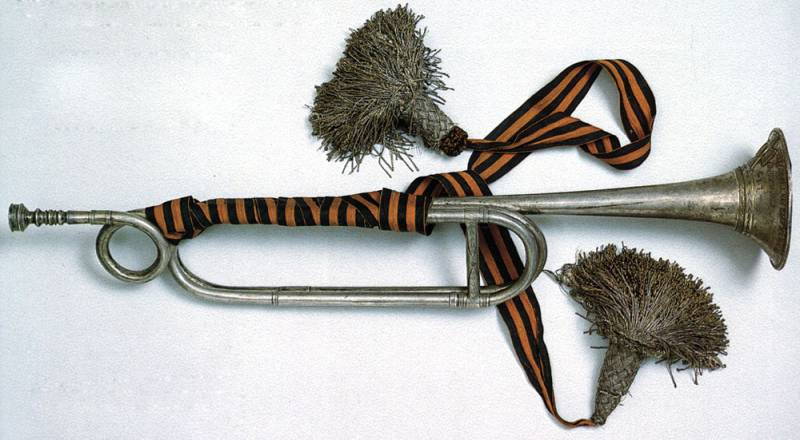
Information